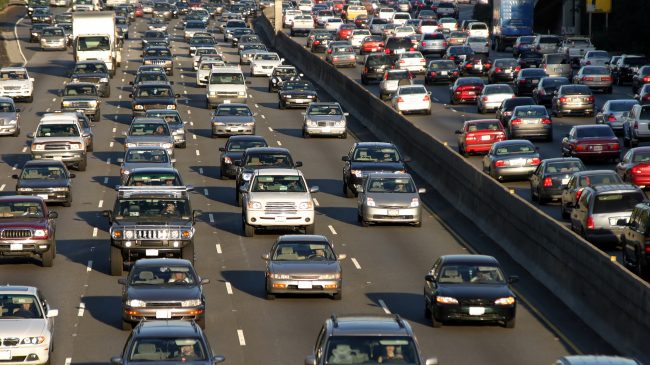California’s highways are a vital part of its economy, so it is disappointing to see the state produce another underwhelming result in Reason Foundation’s Annual Highway Report, which examines the condition, performance, and cost-effectiveness of all 50 state highway systems.
Based on data that each state submitted to the federal government, Reason Foundation’s 24th Annual Highway Report measures the condition and cost-effectiveness of state-owned roads in 13 categories, including the pavement condition on urban and rural Interstates, the percentage of structurally deficient bridges, number of traffic fatalities, how much states spend on administrative costs, and their total spending per mile of state-controlled roads.
If you’re looking for good news in the study, California’s overall highway fatality rate is relatively low, ranking 18th best in the country. And the state has a similar ranking, 19th best, in the percentage of structurally deficient bridges in use.
Beyond that, however, there’s not a lot to like about the state’s roads. California’s highway system ranks 43rd overall in cost-effectiveness and performance, which is actually one-spot worse than it did in the previous Annual Highway Report, where it ranked 42nd overall.
California’s spending numbers are on the high side and it could certainly benefit from streamlining in ways that would reduce its overhead and administrative costs but, in terms of examining total costs per mile, it has done a better job than states like New Jersey, New York, Florida and Massachusetts.
Unfortunately, California’s highway conditions and performance significantly lag its neighbors and other West Coast states. Arizona (ranks 29th), Nevada (ranks 27th), Oregon (12th), and Utah (9th) are all far ahead of California in the rankings. And the state doesn’t fare much better in comparisons to America’s other highly-populated states. California, 43rd overall, significantly trails Texas (23rd), which has the largest state highway system in the country. Virginia has the third-largest highway system, larger than California’s, and it manages to rank second overall in performance and cost-effectiveness. Meanwhile, California also trails Ohio (18th), Georgia (26th), Illinois (28th), Pennsylvania (35th), and Florida (40th), among others.
The state is really hurt by ranking 48th out of 50 in urban traffic congestion. California’s large population, with its booming cities that are filled with people using their cars, has made the state’s traffic jams infamous. The long-term answer to that gridlock in Southern California is a region-wide network of toll lanes operating like the 91 Express Lanes in Orange County, which offer people congestion-free lanes and provide a sustainable revenue stream to maintain them. Similarly, the I-10 and I-110 toll lanes and lanes under construction on I-15 and I-405 promise to offer congestion relief for drivers willing to pay a variable toll. Ideally, over time, Southern California would develop a network of managed lanes connecting the major freeways in Los Angeles, Orange County, Palmdale, Riverside, and San Bernardino.
In the interim, California could still significantly improve its overall ranking and road performance by reducing the number of fatalities on rural highways, where it ranks 47th out 50. It could also dedicate itself to improving its pavement quality and condition on urban arterial roads (ranks 49th out 50), urban Interstate pavement condition (ranks 47th), and rural Interstate pavement (ranks 45th).
Given the amount of money California spends on its highways already, improving those poor pavement conditions are a realistic and achievable goal. Gov. Newsom, the state legislature and Caltrans would need to prioritize maintenance and publicly commit to significantly reducing the potholes, rough spots, and other pavement problems plaguing the state. It’s an effort that could yield rapid benefits to drivers and the economy. And with smoother, safer roads, California would start to make up ground on its neighbors and competitors.
This column was originally published in the Orange County Register.

